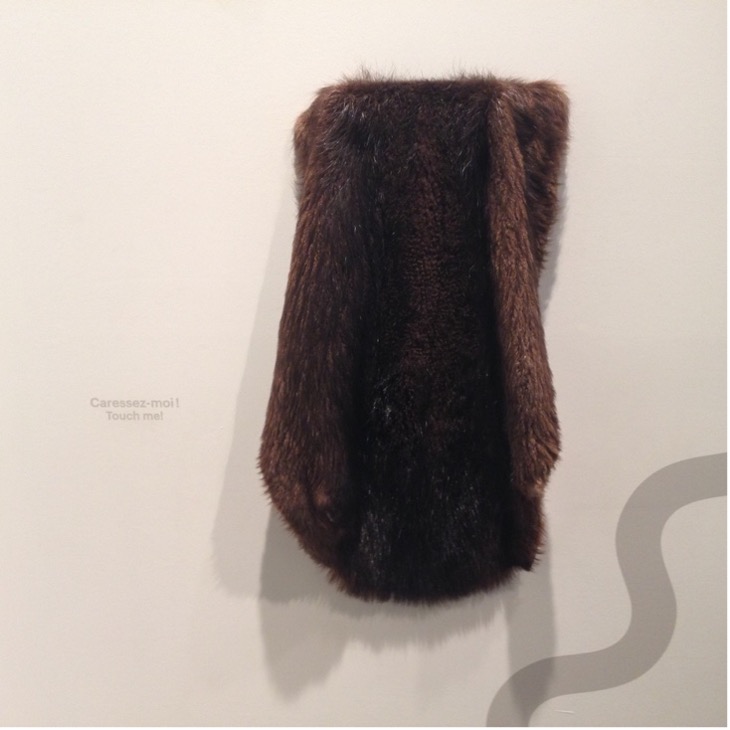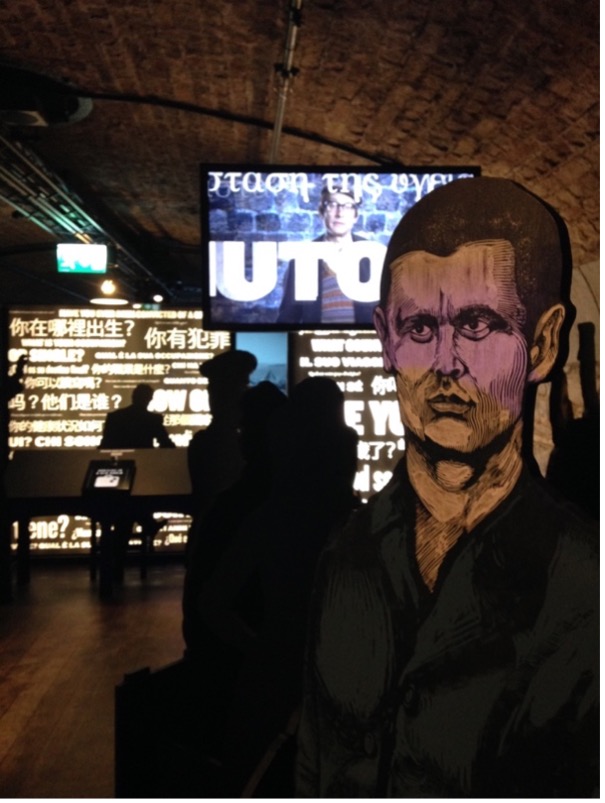Out of Touch?

Figure 1 Animal Fur on display at Centre d'histoire de Montreal, 2018. Credit: Tom Maguire.
‘Caressez-moi! Touch me!’ The instruction on the museum wall next to a furry animal skin was direct, unequivocal and something of a shock when I visited in 2018. The shock was because of my understanding of the more usual museum visitor etiquette: in these public object palaces you can look, but don’t touch the exhibits.

Figure 2 Silver Jug at Walker Art Gallery, Liverpool. Credit: Tom Maguire.
This hands-off approach to the display of objects is enforced in conventions that govern visitor experience in museums and heritage sites: labels, the use of velvet ropes and stanchions to keep visitors and objects apart; encasing objects within glass cases to keep them unmarked by people and the elements, frozen in time.
Even a method such as live interpretation serves a dual purpose to both display the object or site and to regulate visitors’ experiences of it. There is a kind of push-pull at work – “come closer, but keep back!”

Figure 3 Live costumed interpretation at Stirling Castle, Scotland. Source: Tom Maguire.
By preventing visitors from touching objects, there is a threat that museums may themselves be losing touch with visitors in competing within the wider ‘experience economy’ (Pine and Gilmore 2011).
Visitor Engagement
Of course, curators are increasingly keen to get visitors to engage. Often this is through interpretative approaches where objects are substituted by their representation in other media: text, images, photography, and film. Many museums have already embraced the potential of multiple technologies to blend physical and digital experiences of their collections. The online virtual tour at Ballymoney Museum is just one example that allows some sense of the spatiality of its exhibition and an opportunity to get closer to the objects.
EPIC The Irish Emigration Museum in Dublin consists almost entirely of digital representations. All these substitutions create biographies of and through material culture, while its very materiality has receded.

Figure 4 EPIC The Irish Emigration Museum. Source: Tom Maguire.
Responding to the COVID19 Crisis
In response to the public health restrictions in the face of the pandemic, many other museums have turned to these technologies. A further promise of technological innovation to allow digital touch experiences aligns with much of what museums have embraced in response to the pandemic: increased accessibility to collections, overcoming barriers of distance and disability, for example. But such digital haptic technology is not yet in a state of development to provide such experiences at a scale and cost that is within reach of many museums.
The Challenge of Touch
How might curators allow visitors to touch objects – materially present or digitally available – and thereby know them better by knowing them differently? Separated by time, culture and geography, today’s museum visitors live in a different sensory context to the people with whom objects originated. The relationship of cultures of origin to their objects may demand sensory engagement to fully appreciate the place and value of such objects within those cultures, for example. Yet it is precisely that engagement and sensory knowledge that many museum practices refuse.
As we anticipate the full reopening of museums to visitors, many organisations and individuals have committed to using the opportunity of the pandemic to re-think practice to build back better. In so doing, how can museums respond to the opportunities offered by that instruction with which I began: ‘Caressez-moi! Touch me!’?
Dr Tom Maguire is a Senior Lecturer in Theatre Studies and Head of the School of Arts and Humanities. He is a Co-Investigator on the 'Museums, Crisis and Covid19' project at Ulster University.
